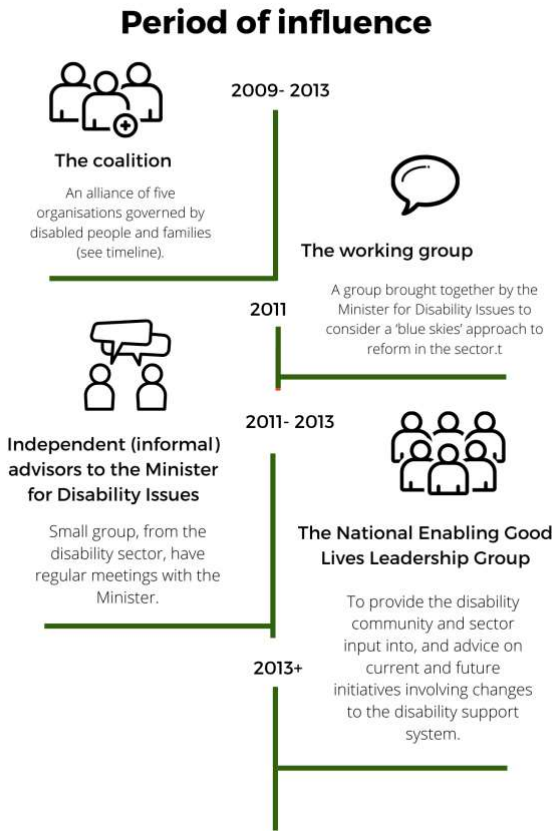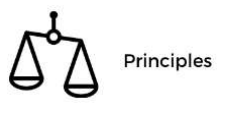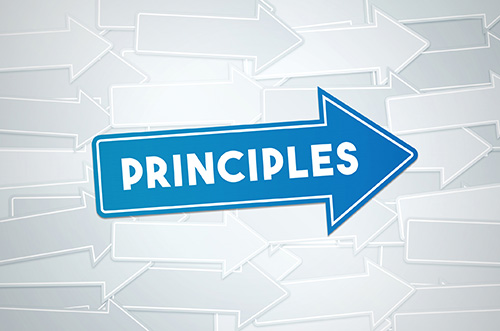OVERVIEW OF ENABLING GOOD LIVES AND SYSTEM TRANSFORMATION
Context
Two significant events in 2008 created increased awareness and opportunity:
- New Zealand ratified the UN Convention on the Rights of Persons with a Disability.
- The Social Services Select Committee Inquiry into the care and service provision for disabled people.
A foundation and ally – the Whānau Ora approach
There was a strong link between the material contained in the paper presented to the Government on Whānau-Centred Initiatives (2009), and the messages from the disabled people, families and innovative providers in the early development of the Enabling Good Lives approach. In the early stages of the EGL approach, whānau ora was considered a core objective of EGL and Whānau Ora an approach that reflected similar aspirations held by many in the disability community.
Direct independent guidance
Dame Tariana Turia was Minister for Disability Issues between 2009 – 2014. Before and after the initial Enabling Good Lives Report (2011), direct independent guidance from leaders within the disability sector, to the Minister for Disability Issues was a strong feature of the initial development of the EGL approach. This independent advice occurred in the following ways:

Who “leads” change becomes a catalyst for action
Within the disability sector, there were high expectations that the recommendations from the Social Services Select Committee Inquiry would result in disabled people and family members having leadership of new innovations i.e. a shifting of authority to achieve increased choice and control. Several organisations and networks, governed by disabled people and families, who had been strong contributors to the Select Committee Inquiry were poised to action some of the approaches they had fought to have acknowledged through this process.
Disabled people’s organisations and family organisations anticipated they would be enabled to use their knowledge, networks and skills to bring about increased choice and control for disabled people and their families. These organisations and networks were dismayed when, rather than their energy and experience being harnessed, the Ministry of Health appeared to “start from scratch”.
Under the banner “the New Model”, the Ministry of Health began to design how it interpreted calls from disabled people, families and innovative providers. New advisory groups were formed and new initiatives began. While some within the disability community agreed with some of the core elements being “trialled”, there was tension between officials and the community over who would “lead” this change. It was believed that there were considerably more effective and efficient ways to make it easier for disabled people and families to have increased choice and control.
While it was clear there was merit in some of what was being trialled, it was seen by many in the sector as costly and “ministry owned and driven”. Frustration at a lack of progress was a significant catalyst for the formation of the” Coalition” (2009) and ultimately the Enabling Good Lives report (2011).

[/av_textblock]
[/av_one_full]
[av_hr class=’invisible’ icon_select=’yes’ icon=’ue808′ font=’entypo-fontello’ position=’center’ shadow=’no-shadow’ height=’25’ custom_border=’av-border-thin’ custom_width=’50px’ custom_margin_top=’30px’ custom_margin_bottom=’30px’ custom_border_color=” custom_icon_color=” id=” custom_class=” av_uid=’av-2cfjyl’ admin_preview_bg=”]
[av_one_full first min_height=” vertical_alignment=’av-align-top’ space=’no_margin’ row_boxshadow_color=” row_boxshadow_width=’10’ margin=’0px’ margin_sync=’true’ mobile_breaking=” border=” border_color=” radius=’0px’ radius_sync=’true’ padding=’0px’ padding_sync=’true’ column_boxshadow_color=” column_boxshadow_width=’10’ background=’bg_color’ background_color=” background_gradient_color1=” background_gradient_color2=” background_gradient_direction=’vertical’ src=” attachment=” attachment_size=” background_position=’top left’ background_repeat=’no-repeat’ highlight_size=’1.1′ animation=” link=” linktarget=” link_hover=” title_attr=” alt_attr=” mobile_display=” id=” custom_class=” aria_label=” av_uid=’av-1amqrh’]
[av_textblock size=” av-medium-font-size=” av-small-font-size=” av-mini-font-size=” font_color=” color=” id=’demonstration-sites’ custom_class=” av_uid=’av-k9bvsuop’ admin_preview_bg=”]
Timeline of the early stages of the Enabling Good Lives Approach
| 2008 | Select Committee | Social Services Select Committee’s 2008 – inquiry into the quality of care and service provision for disabled people. |
| 2008 | CRPD | New Zealand ratified the Convention on the Rights of Persons with Disabilities (CRPD). |
| 2009 | New Model | The Ministry of Health began work on the “New Model”.
The “New Model” was an attempt to action recommendations associated with the Social Services Select Committee Inquiry. The New Model was made up of four key elements: – Choice in Community Living Parts of the New Model were demonstrated in the Bay of Plenty, Lakes, Waikato, Auckland, Hutt Valley and Otago/Southland regions |
| 2009 | The “Coalition” | Formally established with the following partners:
● People First provides information and support to learning disabled people, advocates for them and promotes self-advocacy. It is an international initiative which is run by and for people with a learning disability. |
| 2009 | WhānauCentred Initiatives | The development of Whānau Ora occurred after the Taskforce on Whānau-Centred Initiatives presented a report to Government in 2009. This report has provided the framework for Whānau Ora development throughout Aotearoa New Zealand. |
| 2010 | Sector concerns regarding the ”New Model” | Concern from the sector around the leadership of and the processes associated with the “New Model”. |
| 2010 | Whānau Ora | Launch of Whānau Ora;
Whānau Ora is about increasing the wellbeing of individuals in the context of their whānau, it is whānau – centred. It differs from traditional social and health approaches that focus solely on the needs of individuals. Whānau ora recognises the strengths and abilities that exist within whanau, and aims to support and develop opportunities that fulfill potential. The whānau-centred approach: ● starts by asking whānau and families what they want to achieve for themselves, and then responding to those aspirations in order to realise whānau potential, ● provides flexible support for whānau and families to move beyond crisis into identifying and achieving medium and long-term goals for sustained change, ● focuses on relationships, self-determination and capability building for whānau to achieve positive long-term outcomes, ● uses a joined up approach that focuses on all factors relevant to whānau wellness, including economic, cultural, environmental factors, as well as social factors, ● recognise that each whānau has a different set of circumstances, and what works well for one whānau does not work well for other whanau, ● recognises that whānau and families have skills, knowledge and experiences that contribute to their own resilience, and can provide a platform for whānau and families to become more selfmanaging and independent. https://www.tpk.govt.nz/en/whakamahia/Whānau -ora/about-Whānau-ora |
| 2011 | Day Services Review/EGL | The Minister for Disability Issues, Hon Tariana Turia, invited the Ministry of Health and the Ministry of Social Development to work with leaders in the disability sector to develop a “clean sheet” approach to future developments.
This independent working group of disabled people, families and allies developed what became known as the Enabling Good Lives approach (EGL). Initially, there was a focus on “Day Services”. However, the clear consensus was there is “no sense to chop our lives up into funding streams.” A key feature of EGL, is that it is about people’s lives, not about where the money comes from. In October 2011, Minister Turia asked officials to progress the EGL approach. EGL is a principles-based approach, closely aligned to the Whānau Ora approach, and was initially founded on 10 principles. Principles The Working Group developed the following set of ten principles to underpin future disability supports. These are: ● Self-determination – tino rangitiratanga: disabled people are in control of their lives, and supports are tailored around their interests, preferences and goals. |
| 2012 | Foundation for change | The Ministerial Committee on Disability Issues agreed to the EGL approach as the basis for change in the disability support system. The principles were adapted, by the Committee, to:
Self-determination Beginning early Person-centered Ordinary life outcomes Mainstream first Mana enhancing Easy to use Relationship building |
| 2012 | Christchurch Plan | Three working groups were established:
1. National Network – comprising representatives of key stakeholder groups; 2. Officials – comprising key operational and policy managers from each Ministry; 3. Local Steering Group – with nominated representatives from the National Network agencies, plus identified local community leaders in the disability sector. Each of these groups met regularly through the process and one meeting was held with all groups together to test the degree of consensus and to ensure the approach was demonstrably open and participative. Three facilitated stakeholder groups (disabled persons, families and service providers) each met on three occasions to share the Plan’s purpose and gain people’s insights and expertise about what it should contain. A pro-forma was designed and widely circulated to offer individuals and organisations an additional way of contributing to the Plan. |
| 2012 | Waikato Plan | Objectives
The intent of this project was to consult with disabled persons, family/whānau and selected providers in the Waikato to determine how: 1. existing providers deliver supports in more flexible ways that enable disabled people to have greater choice and control over what activities they are involved in during the day; 2. disabled people in the Waikato will have increased participation and inclusion in mainstream activities and settings (according to their interests); 3. There can be more flexible contracts that enable providers to build on positive changes they have made and move progressively towards providing Process Two sets of separate meetings were held with disabled persons, families and service providers on 25th and 26th June and also 6th and 7th August along with subsequent communication between these groups and the facilitators of this project. Some protocols were established at each meeting including agreement not to quote people directly, to respect the views of all people present, and to seek consensus on any outcomes. Systems Change It is critical to recognise that disabled persons, family/ whānau and many providers emphasised positive development must occur within the context of a much wider and fundamental systems change. This project did not explore the details of the wider systems change. However, it was suggested systems change should include: ● a single place of “governance” that was a partnership between disabled persons, families, providers and officials, |
| 2012 | Affirmation of the importance of the Treaty of Waitangi1 | “The Treaty relationship as set out in the New Zealand Disability Strategy2 , and the Māori Disability Action Plan3 , will continue to be core to this future vision. It will be based on three key principles of participation at all levels; partnership in delivery of support, and the protection and improvement of Māori wellbeing.” |
| 2012 | The EGL mantra | The key components of the “EGL approach” were often described as:
● one person-directed aspirational plan (across all supports), |
| 2013 | The first “demonstration” of the EGL approach | In July 2013, Cabinet agreed to a three-year demonstration of Enabling Good Lives in Christchurch. The demonstration is a new way of supporting disabled people that offers them greater choice and control over the support they receive, and the lives they lead. |
| 2013 | Local leadership – Waikato | This group was initially set up to “oversee and guide implementation of the Enabling Good Lives principles with providers of community participation and vocational services funded by MSD in the Waikato, contribute to the development of the self-assessment tool and the provider guidelines, and consider alignment of the Ministry of Social Development, Ministry of Health and Ministry of Education activities and projects occurring in Waikato.”
Goals: 1. Persons with disabilities, family/whanau of persons with disabilities, service providers and persons with disabilities advocates and organisations are engaged in the design, implementation and monitoring of an Enabling Good Lives (EGL) approach in the Waikato; 2. To be ‘champions for change’ and to ensure momentum with the introduction of an EGL approach in the Waikato; 3. To promote and protect the EGL principles and approaches in the Waikato. |
| 2013 | Tools for change | An EGL principles-based Organisational Self Review tool was developed by SAMS and EGL leaders within the Waikato and a toolbox was developed that described the core skills required by the workforce.
Note: The Organisational Self Review is being reviewed and updated by the EGL Waikato Leadership Group in 2020 |
| 2013 | Funding to build capacity and capability in the Waikato5 | Budget 2013 included $500,000, over three years, for building the skills and confidence of disabled people and their families in the Waikato. |
| 2013 | Disability Support Services Framework Redesign Group | A group of disability sector leaders worked on a plan to make structural changes, within the Ministry of Health, related to accessing an individualised approach with the support of an Independent Facilitator.
The ‘Redesign Group’ believed “The Ministry of Health should work with the disability sector to ensure the Enabling Good Lives principles underpin and guide the transformation of the disability support system. This will include promoting the values, and working with contracted providers to ensure the values are reflected at all levels of their business”. Some of the recommendations included: That the Ministry of Health should implement a revised process for accessing disability support by: 1.1 Put discussions about what is a good life for the person at the front of the process; |
| 2013 | Disability Action Plan | The EGL approach included in the Plan.
Note: This was reconfirmed in the Disability Action Plan 2014-2018 |
| 2014 | Maori | An independent group of Maori, involved with the EGL approach, developed Te Ara Tika – a resource for Whānau Maori. |
| 2014 | Beginning of the second demonstration | In December 2014, Cabinet noted reports on the progress of the demonstration of the Enabling Good Lives approach in Christchurch, and agreed to the high level design for a demonstration of the approach in the Waikato. |
| 2015 | Review of Safety Regulation in Disability Support | The working group supported an EGL based Developmental Evaluation approach as part of their suggestions.
Note: A consensus was not reached between the ‘report writer’ and the working group members regarding how to reflect the decisions of the working group in a final report. |
| 2016 | Disability Action Plan – evidence gathering to inform EGL based transformation | Focus of the work
1.1 Shared result: Transform the disability support system; |
| 2017+ | MidCentral prototype and going national6 | In February 2017, Cabinet directed the Ministries of Health and Social Development “to work alongside the disability community to design a process for a nationwide transformation of the disability support system that would be based on the EGL vision and principles, and underpinned by a social investment approach”. |
(1) www.enablinggoodlives.co.nz/about-egl/enabling-good-lives-context/long-term-change-september-2012/. Also, Download – Cabinet paper Enabling Good Lives demonstration in Christchurch (July 2013) [DOCX, 112 KB]
(2) New Zealand Disability Strategy, April 2001
(3) Māori Disability Action Plan, Ministry of Health, 2012
(4) This was also reflected in the 2008 Select Committee inquiry and the 2013 Putting People First Ministerial Review
[/av_textblock]
[/av_one_full]
[av_hr class=’invisible’ icon_select=’yes’ icon=’ue808′ font=’entypo-fontello’ position=’center’ shadow=’no-shadow’ height=’25’ custom_border=’av-border-thin’ custom_width=’50px’ custom_margin_top=’30px’ custom_margin_bottom=’30px’ custom_border_color=” custom_icon_color=” id=” custom_class=” av_uid=’av-2cfjyl’ admin_preview_bg=”]
[av_one_full first min_height=” vertical_alignment=’av-align-top’ space=’no_margin’ row_boxshadow_color=” row_boxshadow_width=’10’ margin=’0px’ margin_sync=’true’ mobile_breaking=” border=” border_color=” radius=’0px’ radius_sync=’true’ padding=’0px’ padding_sync=’true’ column_boxshadow_color=” column_boxshadow_width=’10’ background=’bg_color’ background_color=” background_gradient_color1=” background_gradient_color2=” background_gradient_direction=’vertical’ src=” attachment=” attachment_size=” background_position=’top left’ background_repeat=’no-repeat’ highlight_size=’1.1′ animation=” link=” linktarget=” link_hover=” title_attr=” alt_attr=” mobile_display=” id=” custom_class=” aria_label=” av_uid=’av-a9cbsd’]
[av_textblock size=” av-medium-font-size=” av-small-font-size=” av-mini-font-size=” font_color=” color=” id=” custom_class=” av_uid=’av-k9bvsuop’ admin_preview_bg=”]
The Enabling Good Lives (EGL) Approach: Foundation documents
In the future, disabled children and adults and their families will have greater choice and control over their supports and lives, and make more use of natural and universally available supports.
 Disabled people and their families, as appropriate, will be able to say:
Disabled people and their families, as appropriate, will be able to say:
- I have access to a range of support that helps me live the life I want and to be a contributing member of my community.
- I have real choices about the kind of support I receive, and where and how I receive it.
- I can make a plan based on my strengths and interests.
- I am in control of planning my support, and I have help to make informed choices if I need and want it.
- I know the amount of money available to me for my support needs, and I can decide how it is used – whether I manage it, or an agency manages it under my instructions, or a provider is paid to deliver a service to me.
- The level of support available to me is portable, following me wherever I move in the country.
- My support is co-ordinated and works well together. I do not have to undergo multiple assessments and funding applications to patch support together.
- My family, whānau, and friends are recognised and valued for their support.
- I have a network of people who support me – family, whānau, friends, community and, if needed, paid support staff.
- I feel welcomed and included in my local community most of the time, and I can get help to develop good relationships in the community if needed.
The Government will get better value for the funding it provides because:
the new approach will generally provide better quality of life outcomes for disabled people and their families (based on international evidence)
- less money will be spent on providers premises and more on support
- government agencies will work more closely together, for example using shared way to determine support needs, integrated funding and contracts.
[/av_textblock]
[/av_one_full]
[av_hr class=’invisible’ icon_select=’yes’ icon=’ue808′ font=’entypo-fontello’ position=’center’ shadow=’no-shadow’ height=’25’ custom_border=’av-border-thin’ custom_width=’50px’ custom_margin_top=’30px’ custom_margin_bottom=’30px’ custom_border_color=” custom_icon_color=” id=” custom_class=” av_uid=’av-2cfjyl’ admin_preview_bg=”]
[av_one_full first min_height=” vertical_alignment=’av-align-top’ space=’no_margin’ row_boxshadow_color=” row_boxshadow_width=’10’ margin=’0px’ margin_sync=’true’ mobile_breaking=” border=” border_color=” radius=’0px’ radius_sync=’true’ padding=’0px’ padding_sync=’true’ column_boxshadow_color=” column_boxshadow_width=’10’ background=’bg_color’ background_color=” background_gradient_color1=” background_gradient_color2=” background_gradient_direction=’vertical’ src=” attachment=” attachment_size=” background_position=’top left’ background_repeat=’no-repeat’ highlight_size=’1.1′ animation=” link=” linktarget=” link_hover=” title_attr=” alt_attr=” mobile_display=” id=” custom_class=” aria_label=” av_uid=’av-8h3fwd’]
[av_textblock size=” av-medium-font-size=” av-small-font-size=” av-mini-font-size=” font_color=” color=” id=” custom_class=” av_uid=’av-k9bvsuop’ admin_preview_bg=”]
 Self-determination
Self-determination
Disabled people are in control of their lives.
Beginning early
Invest early in families and whānau to support them; to be aspirational for their disabled child; to build community and natural support; and to support disabled children to become independent, rather than waiting for a crisis before support is available.
 Person-centered
Person-centered
Disabled people have supports that are tailored to their individual needs and goals, and that take a whole life approach rather than being split across programmes.
Ordinary life outcomes
Disabled people are supported to live an everyday life in everyday places; and are regarded as citizens with opportunities for learning, employment, having a home and family, and social participation – like others at similar stages of life.
Mainstream first
Disabled people are supported to access mainstream services before specialist disability services.
Mana enhancing
The abilities and contributions of disabled people and their families are recognised and respected.
Easy to use
Disabled people have supports that are simple to use and flexible.
Relationship building
Supports build and strengthen relationships between disabled people, their whānau and community.
[/av_textblock]
[/av_one_full]
[av_hr class=’invisible’ icon_select=’yes’ icon=’ue808′ font=’entypo-fontello’ position=’center’ shadow=’no-shadow’ height=’25’ custom_border=’av-border-thin’ custom_width=’50px’ custom_margin_top=’30px’ custom_margin_bottom=’30px’ custom_border_color=” custom_icon_color=” id=” custom_class=” av_uid=’av-2cfjyl’ admin_preview_bg=”]
[av_one_full first min_height=” vertical_alignment=’av-align-top’ space=’no_margin’ row_boxshadow_color=” row_boxshadow_width=’10’ margin=’0px’ margin_sync=’true’ mobile_breaking=” border=” border_color=” radius=’0px’ radius_sync=’true’ padding=’0px’ padding_sync=’true’ column_boxshadow_color=” column_boxshadow_width=’10’ background=’bg_color’ background_color=” background_gradient_color1=” background_gradient_color2=” background_gradient_direction=’vertical’ src=” attachment=” attachment_size=” background_position=’top left’ background_repeat=’no-repeat’ highlight_size=’1.1′ animation=” link=” linktarget=” link_hover=” title_attr=” alt_attr=” mobile_display=” id=” custom_class=” aria_label=” av_uid=’av-9gn8fh’]
[av_textblock size=” av-medium-font-size=” av-small-font-size=” av-mini-font-size=” font_color=” color=” id=’purchasing-options’ custom_class=” av_uid=’av-ka3c87wc’ admin_preview_bg=”]
 1. Self-directed planning and facilitation
1. Self-directed planning and facilitation
All supports and services are led by the preferences, strengths, aspirations and needs of disabled people and their families. An aspiration-based personal plan is the central document to design and measure paid supports. While the core components of plans may be similar, plans may take different forms.
Unique and changing aspirations are to be expected. Supports and services will need to continually adapt in the way they assist people to build and maintain a good life.
An Independent Facilitator (Navigator) can assist disabled persons and family/Whānau to consider existing options and create new possibilities. The degree of involvement an individual or family has with a Navigator is negotiated between the parties.
 2. Cross-government individualised and portable funding
2. Cross-government individualised and portable funding
Disabled people and family/Whānau have control of funding i.e. bulk funding, according to service type, will be replaced with individualised funding where people can choose how they create a good life for themselves. All government funders will contribute to one funding pool that is determined through a simple process of self-assessment (or supported self-assessment) and confirmation.
Disabled people and family/Whānau will be able to move their funding as their preferences and needs change.
3. Considering the person in their wider context, not in the context of ‘funded support services’
Disabled people and family/Whānau belong to networks eg. family, friends and community. These networks are respected as being fundamental to identity, belonging and citizenship.
4. Strengthening families or whānau
There is direct investment in the networks of disabled people and their family/Whānau . Resources are provided to assist understanding, educate and promote increased knowledge of options and how to maximise choice and control.
5. Community building to develop natural supports.
Disabled people are active and valued citizens with an everyday life in everyday places. Enabling Good Lives supports people to achieve desirable outcomes such as education and training; employment; being with friends; having relationships and a family; and taking part in community and cultural activities. Community (generic, mainstream) opportunities and assets are educated and supported to be inclusive and valuing of diversity.
[/av_textblock]
[/av_one_full]
[av_hr class=’invisible’ icon_select=’yes’ icon=’ue808′ font=’entypo-fontello’ position=’center’ shadow=’no-shadow’ height=’25’ custom_border=’av-border-thin’ custom_width=’50px’ custom_margin_top=’30px’ custom_margin_bottom=’30px’ custom_border_color=” custom_icon_color=” id=” custom_class=” av_uid=’av-2cfjyl’ admin_preview_bg=”]
[av_one_full first min_height=” vertical_alignment=’av-align-top’ space=’no_margin’ row_boxshadow_color=” row_boxshadow_width=’10’ margin=’0px’ margin_sync=’true’ mobile_breaking=” border=” border_color=” radius=’0px’ radius_sync=’true’ padding=’0px’ padding_sync=’true’ column_boxshadow_color=” column_boxshadow_width=’10’ background=’bg_color’ background_color=” background_gradient_color1=” background_gradient_color2=” background_gradient_direction=’vertical’ src=” attachment=” attachment_size=” background_position=’top left’ background_repeat=’no-repeat’ highlight_size=’1.1′ animation=” link=” linktarget=” link_hover=” title_attr=” alt_attr=” mobile_display=” id=” custom_class=” aria_label=” av_uid=’av-9gn8fh’]
[av_textblock size=” av-medium-font-size=” av-small-font-size=” av-mini-font-size=” font_color=” color=” id=’skill-development’ custom_class=” av_uid=’av-ka3c87wc’ admin_preview_bg=”]
 These are interdependent but can be implemented incrementally, either
These are interdependent but can be implemented incrementally, either
concurrently or separately in phases.
The five elements are:

1. Building knowledge and skills of disabled people
to ensure disabled people understand the direction for change, and can take up opportunities to have more choice and control over their supports
2. Investment in families
to assist families/whānau to best support their disabled family member to have a “good life” and help them develop a vision and aspirations for what can be achieved
3. Changes in communities
to ensure communities, including businesses, workplaces, schools, and religious, cultural, sporting and recreational activities, are accessible and welcoming.
Communities also need to recognise the contribution that disabled people can make to enhance cohesion and well-being
4. Changes to service provision
to align organisational roles and functions, delivery models, workforce capability, accountability measures, monitoring and evaluation with the vision and principles of the transformed system
5. Changes to government systems and processes
to support the system redesign eg. integrated contracting, individualised funding, flexible outcomes-focussed contracting, funding pooled from across Votes (may include Vote structure changes) and involving disabled people and families in governance.
[/av_textblock]
[/av_one_full]
[av_hr class=’invisible’ icon_select=’yes’ icon=’ue808′ font=’entypo-fontello’ position=’center’ shadow=’no-shadow’ height=’25’ custom_border=’av-border-thin’ custom_width=’50px’ custom_margin_top=’30px’ custom_margin_bottom=’30px’ custom_border_color=” custom_icon_color=” id=” custom_class=” av_uid=’av-2cfjyl’ admin_preview_bg=”]
[av_one_full first min_height=” vertical_alignment=’av-align-top’ space=’no_margin’ row_boxshadow_color=” row_boxshadow_width=’10’ margin=’0px’ margin_sync=’true’ mobile_breaking=” border=” border_color=” radius=’0px’ radius_sync=’true’ padding=’0px’ padding_sync=’true’ column_boxshadow_color=” column_boxshadow_width=’10’ background=’bg_color’ background_color=” background_gradient_color1=” background_gradient_color2=” background_gradient_direction=’vertical’ src=” attachment=” attachment_size=” background_position=’top left’ background_repeat=’no-repeat’ highlight_size=’1.1′ animation=” link=” linktarget=” link_hover=” title_attr=” alt_attr=” mobile_display=” id=” custom_class=” aria_label=” av_uid=’av-9gn8fh’]
[av_textblock size=” av-medium-font-size=” av-small-font-size=” av-mini-font-size=” font_color=” color=” id=’contributing-to-system-transformation’ custom_class=” av_uid=’av-ka3c87wc’ admin_preview_bg=”]
 Control
Control
The intent of the Enabling Good Lives approach is to make changes so that disabled people and their families have control of their lives. This includes having the “say so” in how resources are used.
Diversity
A diverse group of people is included in the term “disabled people”. Disabled persons and their families require different supports, services and approaches in order to achieve equity
Value of Family/Whānau
The Enabling Good Lives approach respects the central importance of family/whānau.
Different Communities
Enabling Good Lives recognises people live in varied communities. With the Enabling Good Lives approach, some things will be the same around the country (i.e. principles, general outcomes and monitoring processes) but some communities may need to do things differently to suit their specific circumstances and preferences.
Increased Choice
An objective of Enabling Good Lives is to increase choice and not eliminate existing options
Change
Enabling Good Lives is both about a whole new way of doing things (i.e. systems change) and about supports and services doing things in different ways (i.e. service transformation)
A New “System”
The Enabling Good Lives approach is based on the belief that for disabled people and family/whānau to experience real choice and control, complete system change is required i.e. Enabling Good Lives is not an “add on” to the existing system
A Unified Approach
Enabling Good Lives stresses the critical importance of change being across Ministries, ‘joined up’, strategic and consistent with the expectation and aspiration expressed by disabled people and family/whānau
Joint Governance
Disabled people, their organisations and family/whānau national networks must have key roles in both National and Regional Governance of the system’s
transformation and the new approaches that are created
Individualised Funding
When “system” transformation is completed all individuals and family/whānau will have individualised funding – people can choose to use this in multiple ways. All funding sources will contribute to the same pool of resource.
New Roles
Many of the functions currently performed by Needs Assessment and Service Coordination organisations (NASCs) need to be replaced by two separate functions in distinct organisations i.e. a simple assessment to determine and confirm funding levels and Independent Facilitation (navigation).
Move to a Facilitation Based Approach
All supports and services will move towards an approach that makes it easier for disabled people and their families to create good lives for themselves in the community i.e. towards ‘facilitation’ and away from ‘provision’
Community
A primary focus for services is to assist disabled people and families to access and contribute to community based (generic) options, supports and services
Building a Better Way
All Enabling Good Lives initiatives are developed with the reasonable expectation they can improve supports and services according to the perspective of disabled persons and their families i.e. do no harm.
[/av_textblock]
[/av_one_full]

